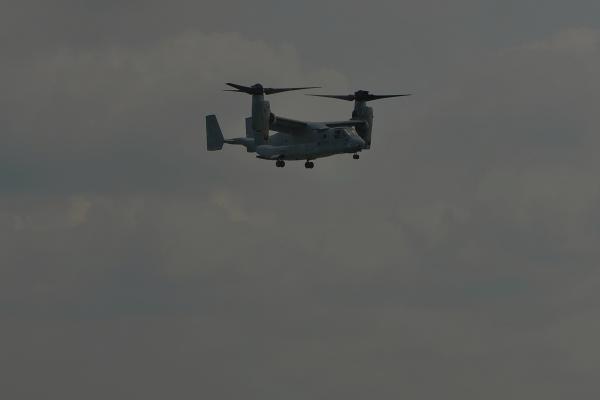The U.S. Air Force plans to build six new helipads in the jungle as part of a deal to give close to one-half of the training center acreage back to Japan. Yet right in the middle of these proposed helipad sites lies Takae, a village of about 150 residents. They are the people who will suffer the increased air traffic that is sure to result if the helipads are built. They will also have to abide the possibility of a crash — there have been at least 43 aircraft accidents since 1972, and in 1959 a plane carrying two missiles crashed into a school, killing 17 people and injuring 210.
Now that the air force has a new toy, the MV-22 Osprey helicopter, there have been a lot of trainee pilots going out on practice runs. Unfortunately, the Osprey has established an abysmal safety record compared to earlier models. Its “safety” features are not, in fact, safe for potential bystanders.
Takae residents also believe that the U.S. military would like to use their village as part of its training exercises, an idea that doesn’t seem so farfetched after considering what happened during the Vietnam War. At that time, the U.S. military built a “dummy” village in the jungle and forcefully conscripted Takae residents, one as young as six years old, to wear black clothing and carry on as though they were living in a Vietcong stronghold. The conscripted residents were even required to stage mock attacks from the village.
Read the Full Article

